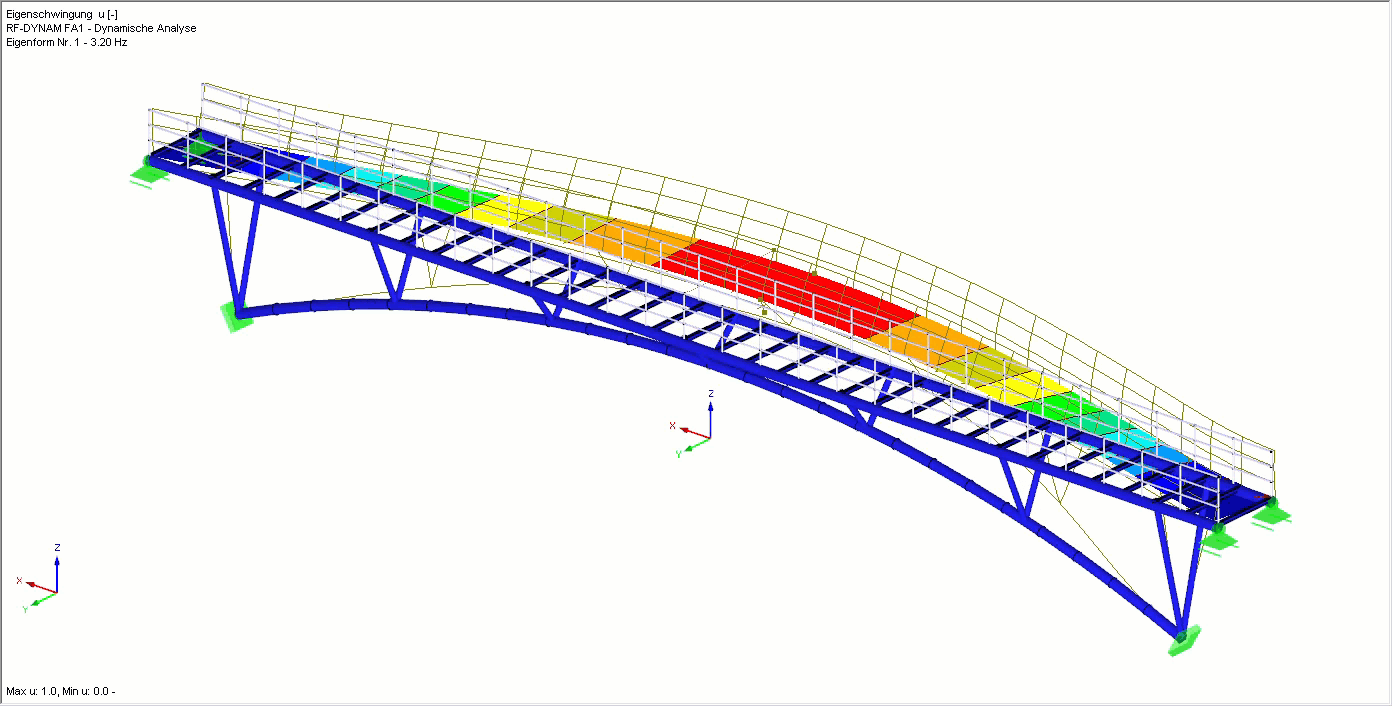The starting point of a dynamic structural analysis is often modal analysis or eigenfrequency analysis. This determines the influence of vibrations on a structure. The natural frequencies and the corresponding eigenforms of the structure are calculated. The natural frequency of a structure susceptible to vibration is the frequency with which the system can vibrate as its own form after a single excitation. If a weakly damped structure is excited from the outside with this frequency (excitation frequency), high amplitudes can occur. This is referred to as resonance effects.

Dynamic structure analyzes
Dynamic structure analyzes
The vibration behavior of a structure or building consists of two basic components:
- excitation frequency
- Eigenfrequenz der Struktur (Systemantwort)
The range in which natural frequency and excitation frequency overlap or are very close to each other is particularly critical. At this point a so-called dynamic elevationoccurs, which can be harmful for a structure. This condition should be avoided if possible.
Natural frequency analysis of a footbridge:


The natural frequency of a structure can be determined with a calculation model and modal analysis modal analysis by means of a tuned analysis software . A model (3D, surface or framework model) is implemented by the structure to be examined. The stiffness ratios and mass distribution are important in this context.


For existing structures, a in-situ measurement is recommended. The excitation of the structure is recorded as displacements, vibration velocities or accelerations. By evaluation of the measured quantities and a subsequent Fast Fourier Transformation (FFT) it is possible to decompose the digital signal into its frequency components. The frequency analysis allows to identify the dynamic properties of a vibrating system via the input and output signal. Thereby the excitation of the structure from outside represents the input signal. The oscillations caused by this are called output signal. By using different signal analysis functions, certain frequencies, whose excitation leads to stronger vibrations (resonance) of the system, can be identified.


If the natural frequencies of the structure have been identified and the frequency range of the excitation is known, the resonance susceptibility of the structure can be assessed. In order to be able to judge a superposition of excitation and natural frequency better, the so-called campell diagram is usually used. This makes it possible to compare the frequency ranges for the excitation and the determined natural frequencies of the structure. In the campell-diagram it can be read off relatively fast, in which ranges resonances can occur and at which frequencies the structure can be endangered.
Dynamic amplication factors


After the preceding modal analysis, the calculation of a structure in the time domain is carried out, which is called dynamic structural analysis. This can usually only be carried out with numerical calculation methods durchgeführt werden.
Thereby transient or shock-like loads such as:
- Earth quake simulation
- wind
- wave and current
auf Struktur oder Bauteile aufgebracht.
The following time-dependent parameters can then be calculated:
- Internal forces
- Stress
- Strains
- Displacments / Rotations
- forces at boundary conditions / suppoerting forces

Our services
The SKI Ingenieurges. mbH can offer structural and dynamic structural analyzes within the framework of structural design and structural assessment. These essentially comprise the following structural analyzes:
- Abstracting structure by a suitable model .
- Determination of mass distribution
- Natural frequency analysis of the structure (modal analysis)
- In-situ measurements of the support structure
- Fast Fourier Transformation (FFT) der Messergebnisse
- Determination of natural frequencies
- Analysis and assessment of the frequency spectrum
- Assessment and definition of appropriate measures to reduce the resonance risk
- Calculation of buildings under earthquake stress
- Structural analyses of components by means of defined acceleration
- Design of structural loads due to wind, wave and current
- Time domain analyses

Copyright © 2025
SKI Ingenieurges. mbH
Mengendamm 12
30177 Hannover
Phone: +49 (0) 511 / 261847-0

